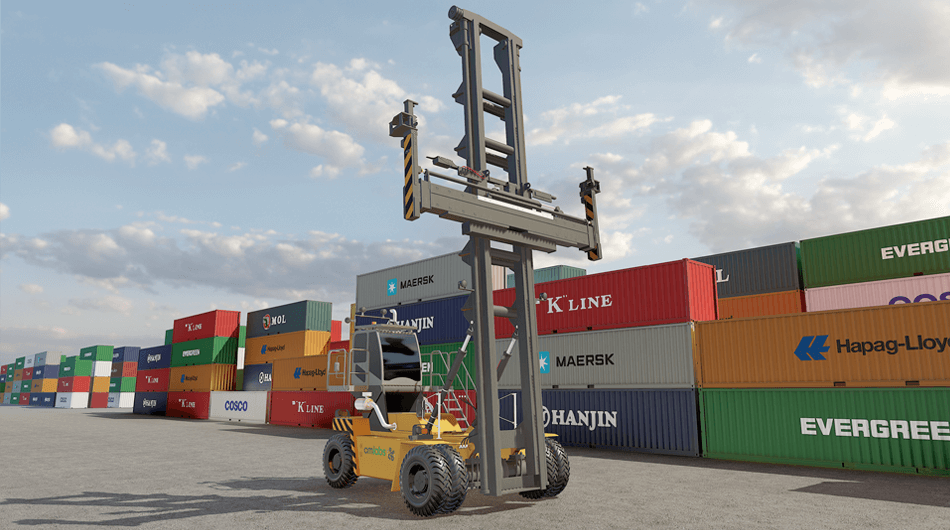In a world where perception often has more impact than the truth, the forestry industry continues to face some very real challenges to its image on a number of fronts, from environmental responsibility to workforce diversity, and pace of technology adoption.
Fortunately, steps are being taken to overcome such PR challenges, and simulation-based training is emerging as a driving force to combat these obstacles and help reshape the image of the forestry industry.
Today, simulators are widely employed throughout such sectors as construction, material handling, military, and more to train heavy equipment operators. As a training technology, simulators are shown to accelerate learning and improve retention as compared to traditional methods. And while enhanced training outcomes are clearly their overriding asset, simulators can also support company or industry initiatives in less obvious ways.
The Environment
While the forestry industry has quietly gone about fulfilling the world’s wood, pulp, and paper needs, what has gone even less noticed are its conservation efforts. Consequently, logging companies are generally saddled with a negative public perception with respect to deforestation, land erosion, pollution, and other environmental issues.
To understand the magnitude of the problem, one need to look no further than a survey from The United Nations’ Food & Agriculture Organization (FAO) in which the forestry sector was called out as the biggest threat to the environment. Of those responding, 43% believed that significant environmental damage was caused by its operations, while 34% considered it to be responsible for at least moderate damage. In total, more than 3 of 4 responders believed the forestry industry to be harmful to the earth’s ecosystem.
A related concern is the effect of emissions from its heavy equipment. According to the Environmental Protection Agency (EPA), and other credible sources, diesel emissions have a detrimental impact on areas ranging from human health to the environment. To address this the EPA introduced the Diesel Emissions Reduction Act (DERA). As a result, forestry equipment manufacturers have been engineering lower emission equipment that incorporate new features designed to promote cleaner and less intrusive harvesting.
Although on-the-job training my not contribute largely to diesel emissions it does have an impact, one which can be minimized with simulation. Reducing the number of training hours spent on actual equipment, simulators lower the carbon footprint associated with perfecting logging tasks in the field. Additionally, practicing operator skills virtually, rather than in the field, allows students to master tree harvest operations without depleting or wasting limited natural resources.
Promoting Diversity
Not surprisingly, the logging workforce, like many blue collar industries, presents a diversity deficit; and research from Natural Resources Canada helps to quantify this imbalance. According to the study, women comprise 17% of the workers in the forestry industry, while immigrants (who represent a whopping 25% of the overall Canadian workforce) make up only 12% of this sector. On the low end of the scale were Indigenous people who account for a mere 7% of the logging workforce. These numbers are consistent with a global trend where women and minorities are vastly underrepresented. World-wide the industry has less than 20% participation by women, and even less by people of color.
The good news is that steps are being taken to fill labor shortages while promoting diversity. The Canadian Institute of Forestry is collaborating with the Centre for Social Intelligence and forestry companies to attract more minority workers. Similarly, in the state of Maine, where just 8% of licensed foresters are women, steps are also being taken to promote the industry as a viable career choice for women.
Because training is key to the initiative’s success the project is working closely with training centers and trade schools to instruct these new recruits and make the industry more welcoming to under-represented groups. Programs like these can be further advanced with simulation by exposing potential trainees from diverse backgrounds to a career they previously assumed was reserved for others.
Virtual instruction replicates worksite conditions and machine movement to create an engaging, realistic, and effective training experience. At the same time, this controlled and stress-free setting promotes confidence by safely preparing a largely inexperienced workforce for a challenging and often intimidating field.
Leveraging Technology
Despite the industry’s venerable history, logging companies are beginning to embrace innovative new products. As a result, the application of drones, GPS, autonomous vehicles, virtual reality, and other technologies are becoming increasingly prevalent.
For example, light detection and ranging laser scanning allow forest planners to produce 3D datasets to better assess road building opportunities, stand value and wood quality, resulting in more efficient inventory management. In a recent interview, Francis Charette from FPInnovations discussed the emerging cyber revolution and its impact on forestry. Charette discussed the details of a concept termed “Forestry 4.0” and how connectivity, automation, collaborative systems, on-demand production, and other advancements are transforming the industry.
Similarly, with consoles, computers, and hi-resolution screens today’s heavy equipment operator cabs bear little resemblance to those of the past. Matt Mattioda, of Miller Lumber, puts the growing technology of today’s logging equipment into perspective. “It’s as complicated as flying a plane,” he said when interviewed. Professionals like Mattioda believe that these and other advancements will continue to move forestry and logging into a more favorable light and draw tech-savvy young people to the industry.
As technology becomes more prevalent and equipment more complex, simulation-based training will take on an increasingly important role. Arming operators with the skillset to fully leverage such innovations can increase productivity and allow companies to realize a faster return on costly equipment investments.
Branding the Industry
Simulators are growing in use across different industries and for different purposes. Whether it’s for recruitment and training, demonstrating product innovations or mission planning, simulation technology helps organizations meet a variety of demands.
As the forestry and logging industry continues to support efforts to increase sustainability, create a more inclusive workforce, leverage innovation, and attract new talent, simulation can help to further advance these efforts and change public perception.
Interest in learning more? Access all the sessions from our Virtual Forestry Event here to discover how organizations are leveraging simulation technology.




